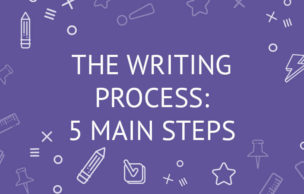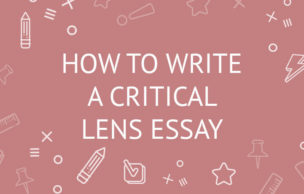How To Write A Good Conclusion Paragraph

The conclusion paragraph is what you end your essay or other paper with. This is where you give your reader a brief recap of what they have just read. Of course, you want to have your paper well-written, and that includes the conclusion paragraph. A good conclusion paragraph is basically the one that solidifies the main point of your writing. Obviously, this means that your main point should be included in your conclusion paragraph. You have probably already written an introduction paragraph that you are particularly fond of. As an option, you can just paraphrase it and make it into your conclusion. But let us go into more detail.
Your introduction paragraph is your main source for writing your conclusion. For example, if your writing begins with something like “For me, there are only three movies that were released in 2016.” Then, your conclusion will have a sentence like “The three movies that made 2016 worthwhile in terms of cinema are Zootopia, Arrival, and The Jungle Book.”
If your paper is longer than a typical essay, just recycling your introduction will not be enough. You will have to return to each section or paragraph and summarize it in your conclusion. For instance, if your writing was about pets, then different sections of your paper are most likely dedicated to different kinds of pets. This is why, it is only logical to mention all kinds of pets in your conclusion: “Cats, dogs, goldfish, and parrots are for different tastes of animals lovers, but they can be equally good pets.”
It is good to end up with something thought-provoking. You can offer the readers to research more on the topic themselves. For example, "Many people remain surprisingly unaware of how larger corporations control the food markets." You can suggest or even encourage other activities – such as, "It is not so hard to make a difference. Just go to the nearest pet nursery and pick the cutest little furball!”
To crown it all, the purpose of a concluding paragraph is to wrap up the concentrated gist of your whole paper. This is how your essay is finalized to leave the readers with a sense of fulfillment and satisfaction when they finish it.
UNDERSTANDING THE DEFINITION OF A CONCLUSION PARAGRAPH
- The final note on which you leave your reader
- The concentrate gist of your whole body of writing
- The proof that you had made the point that you were going to make when you started this writing
- The demonstration that you have backed up your thesis
- The closure of the paper’s subject
THE CONCLUDING PARAGRAPH IS BUILT THIS WAY
- The mirror reflection of your paper’s introduction
- A general opening line that grows more specific as the reader reads the introduction of your paper;
- In the concluding paragraph, on the contrary, you move from the specific to the general
THE PLACE OF CONCLUDING PARAGRAPH IN YOUR PAPER:
If we had to draw a scheme of an essay, here is where the conclusion would be:
Introducing paragraph ➔ Thesis statement ←➔ Main body ← Concluding paragraph
WHAT THE CONCLUSION PARAGRAPH DOES:
- It closes up your essay to leave your reader with everything clear and understood and with no questions left
- The topic section of your conclusion paragraph is supposed to paraphrase your thesis statement
- It is to demonstrate that you have fulfilled the task that you have set for yourself
- Avoid simply replacing the words from your thesis statement with synonyms. This would be an instance of redundancy, which is a mistake
- The very essence of your thesis statement needs to be brought in a new light
- The conclusion must have something of its own to give to the reader – a direction for thought or a suggestion
- The supporting sentences of the concluding paragraph do not bring anything new to the table, they recycle what has already been said If you have caught some inspiration when writing the concluding paragraph, you must remember to restrain yourself from putting new ideas in there. Instead, allocate this new idea its own separate place in the main body, if you can. If this seems impossible, then it should be left out for now – who knows, maybe it can be a basis for another brilliant essay?
- You should not overlook any paragraph idea from your main body in your concluding paragraph
- All the main points should be condensed in the conclusion, nothing should be left out
- The final sentence of your conclusion paragraph should leave your reader feeling completely fulfilled and satisfied
- The final sentence should bear the message that you have said everything there was to say on the topic
- Underline the significance of what you were talking about
- Give your reader an entirely fresh perspective on the topic
- Conclude with an optimistic tone
- Your readers should be left in a good mood upon having read your writing
TIPS FOR BUILDING A POWERFUL CONCLUDING PARAGRAPH
- Always ask – So what?
- Re-read every statement and ask the question – So what? Does it make any difference?
- Think well about this question before you come up with a reply
- The point here is that having a pet at home is fun.
- So what?
- Well, having fun makes you feel better.
- Who cares?
- Fun is a positive emotion and experiencing it for a prolonged period of time on a regular basis increases your overall satisfaction with life, and – consequently – your productivity at school, work, etc.
- Revise what was said in your introducing paragraph
- This closes the logical “loop” for your reader giving them the sense of fulfillment
- If you started out with a hypothetical course of events, you could restate this by claiming that this is your evidence to solidify your argument and that it speaks in favor of your standpoint.
- Use key words and phrases from your introduction to building the aforementioned "loop". Parallel images and mirror metaphors are also a good idea.
- Sum it up
- Summing it up does not only suggest repeating what you have already mentioned in the main body of your writing
- Link all the main points from your main body into a wholesome conclusion that makes a point
- All these main points should be organically connected to the evidence that supports them, and this organic connection has to be revealed in your conclusion paragraph
- To keep your reader focused, you can drop something provocative – like a quotation that you stumbled upon during your research for this paper
- Your conclusion should also answer the question, “Now what?” Remember to suggest your reader what they should do with the information they have just obtained. This can be a way to solve an existing problem, a direction for further study, or a combination of the latter and the former
- Your concluding paragraph also has the mission to put your work on the map of other research in the given field
- For example, a paper about the heritage of Malcolm X should be placed on a background of African American movement as a whole. You should hint on what influenced him and how he influenced the activists that came after him.
Finally, WHAT NOT TO DO:
- Start off you concluding paragraph with a common introductory phrase that can be avoided, such as "in conclusion…," "to sum it up…," "as we have found out…," "to crown it all…," etc. As good as it may sound in oral speech, it gives the text the unnecessary extra feeling of formality and giver the reader an impression that the essay writer was looking just to add any words for the sake of it.
- Resort to pathos – an emotional appeal, unless it is in the spirit of the rest of the paper.
- Introduce new ideas or facts / supporting evidence that you have for some reason not mentioned in the main body of your paper.





